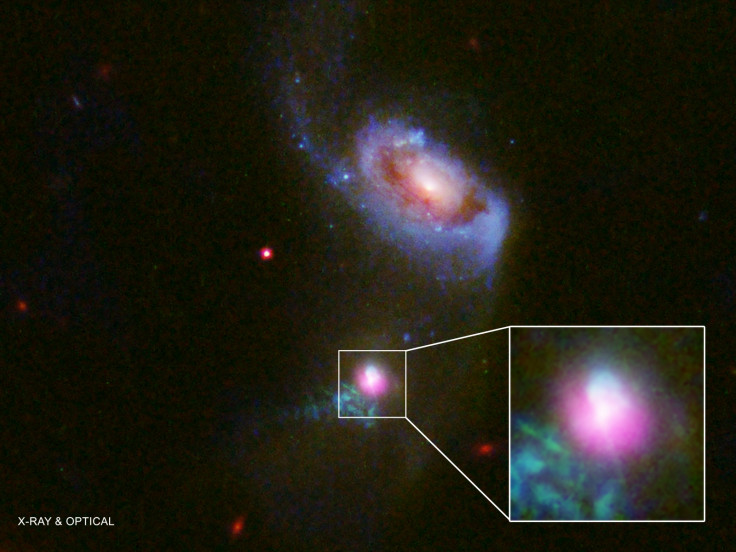Distant supermassive black hole caught feeding and blasting out double cosmic 'burps'
Astronomers have captured "burps" in the past but this is the first time a supermassive black hole has been caught burping twice.

A supermassive black hole at the centre of a distant galaxy has been caught feeding and blasting out high-energy cosmic particles in the form of a "double burp".
Black holes, which can be a million times heavier than our Sun, are known to devour anything in their proximity. They go through occasional feeding episodes where hot cosmic gas gets sucked in and high-energy particles are emitted in the form of jets of bright light.
Astronomers have captured burps like these in the past, including one from the Milky Way, but this is the first time a supermassive black hole has been caught burping twice, according to a report in Phys.org.
The massive black hole is located some 900 million light-years away at the centre of a galaxy dubbed SDSS J1354+1327. It was observed from the Hubble and Chandra X-Ray Telescopes and was found to be emitting two bubbles of gas – one from the north of the centre of the galaxy and other from the south.
The dual effect, as the research team notes, is due to a companion galaxy that collided with SDSS J1354+1327 in the past. As a result of the collision, the two galaxies got linked by streams of stars and gas. The material from this stream swirled into the centre of SDSS J1354+1327 and was ultimately eaten up by the supermassive black hole.
Out of the two remnant emissions observed, the belch from the north occurred more recently and has expanded 3,000 light-years out, while the one from the south had occurred 100,000 years earlier, going 30,000 light-years from the black hole, according to a report in Space.com.
This galaxy really caught us off guard," said study co-author Rebecca Nevin. "We were able to show that the gas from the north part of the galaxy was consistent with an advancing edge of a shock wave, and the gas from the south was consistent with an older quasar outflow."
The latest observation, published in The Astrophysical Journal, also lends credence to the theory that supermassive black holes go through messy cycles of feeding and burping, although this could mean just a couple of burps over a gap of several hundred thousand years, just as we saw in this case.
"We are seeing this object feast, burp and nap, and then feast, burp and nap once again, which theory had predicted," says study lead Julie Comerford. "Fortunately, we happened to observe this galaxy in a moment where we could clearly see both events."
Comerford presented the findings at the 231st meeting of the American Astronomical Society on 11 January, 2018.





















